How To Effectively Anchor A PWC
PWC anchor options and tips
Obviously the goal of owning a personal watercraft is to spend as much time as possible out on the water riding, but even the most ardent PWC enthusiasts have to stop eventually. And often that stop isn’t at a convenient dock or launch ramp, but a really scenic beach where you might want to hang out for a while, or a riverbank where you might want to rest or have lunch during a scenic touring ride.
In short, places where securing your PWC is far from convenient.
The solution is one that your fellow boaters have employed for centuries – an anchor. The catch? Don’t expect the same security and holding power enjoyed by those boating brethren. The size of a PWC – or more appropriately, the size of its storage compartments – means anything with any real holding power will have to be left at home. And while we’ll readily admit most of the alternatives offered by the aftermarket aren’t perfect, they are capable of getting the job done…if used properly.
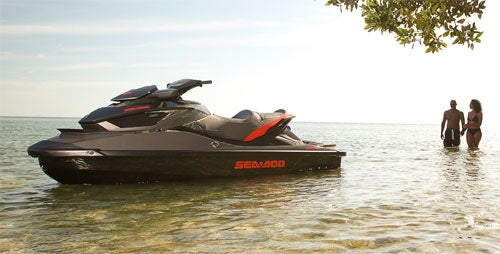 You won’t have access to a dock every time you get off your PWC, which is why it’s a good idea to have and know how to use an anchor.
You won’t have access to a dock every time you get off your PWC, which is why it’s a good idea to have and know how to use an anchor.Yup, anchoring effectively isn’t just a matter of tossing out a weight and expecting your craft to stay put. You need to have the right tool for the job, and use it the correct way to ensure your craft won’t simply float away when you least expect it.
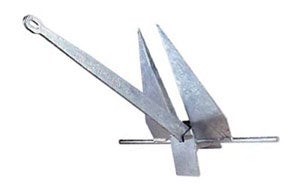
That “right” tool is a challenge on a PWC for reasons already mentioned, but also because bottom conditions vary so widely. A Danforth-style (fluke) anchor may bite nicely into a sand or mud bottom, but fail to get a grip in rocky conditions. A mushroom-style anchor may hold a lightweight craft like a PWC in flat conditions, but don’t count on it when things turn rough or windy, as it can easily be dragged across the bottom. Consider your riding environment, or where you plan to explore, and pick the style that works best for the conditions.
Of course, the choices may be limited. Unlike the wider range of styles available for mainstream boating, PWC anchors tend to come in only a few varieties. Flukes are available, and may be one of the better choices as long as your riding area is above sand or mud. Grapnel-style anchors can also be effective and bite in similar conditions, as well as take hold in gravel or rock. Other PWC-friendly choices include anchor “bags”, which are simply filled with sand or rocks from the nearby environment and closed with a drawstring, or even screw-in posts, which can be driven into the ground for a secure anchoring point. All are purposely kept small, and typically come with a padded storage bag to protect your storage compartment.
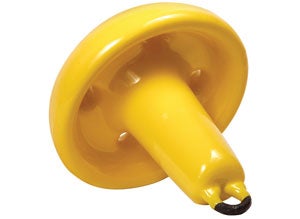
Whatever your choice, your anchor will only work if you use it effectively. Having enough weight or getting a “bite” on the bottom is essential, but so, too, is the use of the anchor’s length of rope (the anchor’s “rode”) that secures that anchor to your craft. Anchor your PWC right above your anchor on a taut line and it’s certain to fail in all but the most serene conditions. Secure that anchor, then play out the proper length of anchor rode, and your craft has a far better shot at staying put.
In general, plan on having a five-to-one ratio between the scope (the amount of the anchor rode that you play out) and the depth of the water you’re anchoring in. Anchoring in 4’ of water? Count on playing out a good 20’ of rode to provide the best results.
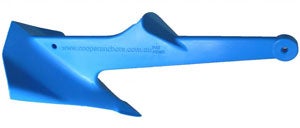
Whatever anchor you choose, and no matter how carefully you follow the five-to-one ratio, keep an eye on your craft. PWC anchors simply aren’t big enough to completely trust, meaning they’re better for short stops.
But hey, you’d rather be out riding anyway…right?
Related Reading
How To Tie Secure Knots for Your PWC
How To Avoid Common Mistakes of the Newbie PWC Owner
How To Find Good Service For Your PWC
How To Remove and Install PWC Traction Mats
Get PersonalWatercraft.com in your Inbox!
Like PersonalWatercraft.com on Facebook
Comments
Most Popular

2024 Kawasaki Jet Ski STX 160X Review

2025 Yamaha JetBlaster PRO 2-Up Review

Remembering the Sea-Doo XP

Electric Sea-Doo Coming By 2026

2013 Yamaha VXR Review





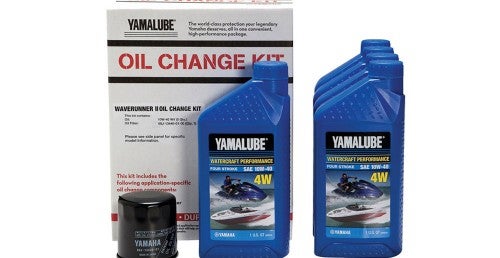







 Your Privacy Choices
Your Privacy Choices